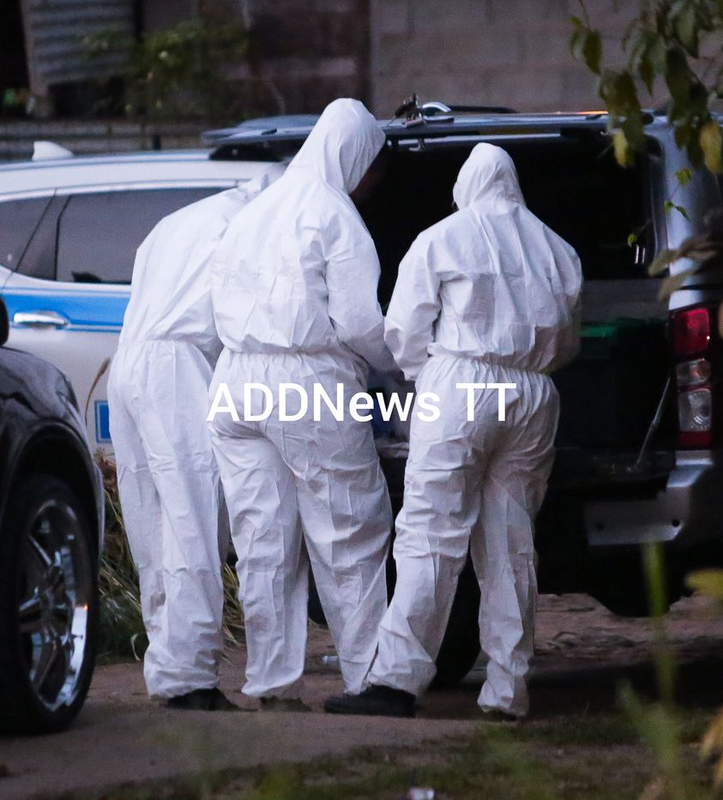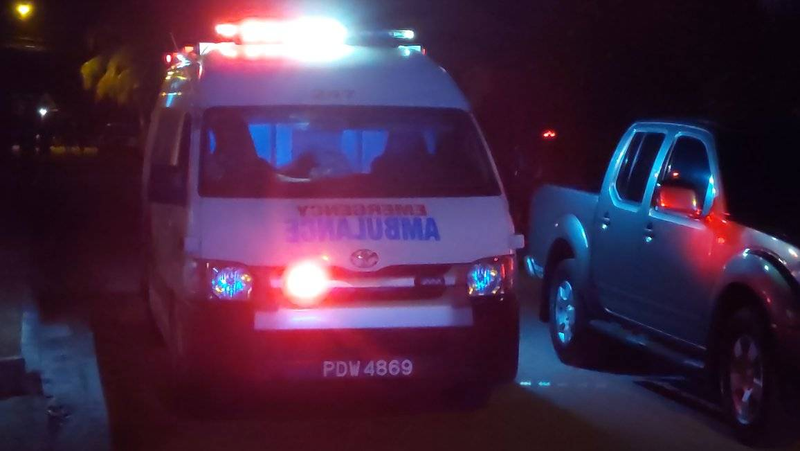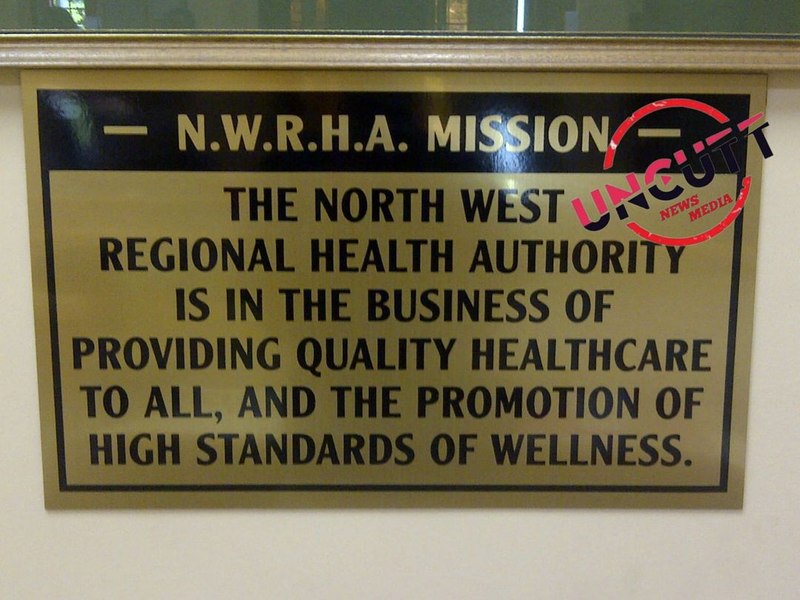- Home
- JO Radio HD
- Motivation
- Chat Room
- T&T News
- World News
- Unfiltered News
- T&T Jobs
- Global Jobs
- Testimonies Of God
- Natural Health News
- Survival Tips
- Feed D Need (Non Profit)
- Apts For Rent
- Land & Properties For Sale
- Movies
- Events
- Weather & Natural Events
- Christian News
- Products
- Services
- Books
- JC Vibes Music
- Property Info Form
- Ad Agents
- JO Radio LIve Podcast Network
- Classifieds
A 58-year-old man was shot dead last night in Morvant. The deceased has been identified as Ian Downes of New Street in Morvant. According to police reports at about 9:45 pm yesterday residents of the area heard a gunshot and notified the police

The decomposing body of a man was found by a neighbor
Tragedy struck a quiet neighborhood in St. Augustine as authorities responded to a report of the discovery of a decomposing body.
A neighbor, who wished to remain anonymous, informed the officers that she had last seen her neighbor, Hollis Esdelle, 59, on Monday, April 24th, 2023, around 1 pm. Hollis had complained of feeling unwell at the time. She also mentioned that she began noticing a foul smell coming from Hollis's residence a few days later and decided to contact the authorities.
At about 10 am Friday 28th April 2023 FSSO Smith and the Tunapuna Fire Station team used force to enter the home. Upon entering, officers and firefighters discovered the body of a nude male in an advanced stage of decomposition in a room on the eastern side of the house. The body was lying on its back with its head in an easterly direction and feet to the west.
The scene was visited by DMO Dr. Perreira, who made her pronouncement and ordered the removal of the body. The body and the scene were photographed by Wpc Bynoe of the ND CSI, and the body was subsequently removed by Stefan Jack and Anthony Weekes of Ideal Funeral, pending post-mortem at a later date.
Enquiries into the circumstances surrounding Hollis Esdelle's death are ongoing. The authorities are urging anyone with information that may help their investigation to come forward. This unfortunate incident has shocked the community, and the police are working tirelessly to determine the cause of death and bring closure to Hollis's family and friends.
Courtesy:ADD News TT
All reactions:
881/5/2023


Francis Joseph, a 54-year-old unemployed resident of Ferry Road Carapo, is currently dealing with the aftermath of a fire that engulfed his home yesterday. According to reports Francis had left his unsecured 20ft x 20ft galvanize and wooden structure around 11 am on Saturday 29th, April 2023, and was alerted by a relative around 6:10 pm that his home was on fire.
The relative, along with other people in the area, managed to extinguish the flames, which were contained within the structure. However, the damage had already been done. No one was injured in the incident, but Francis's home, which lacked both water and electricity, was destroyed. The structure was also not insured.
Following the incident, Investigator Ag/Cpl Fortune, accompanied by WPC Williams, visited the scene and interviewed witnesses. Members of the Northern Division Crime Scene were subsequently requested, and FSSO McKay and a team of fire officers from the Arima Fire Station also visited the scene. Enquiries into the cause of the fire are ongoing.
Courtesy:ADD News TT

Doctor at Port of Spain Gen Hosp: The environment within the operating theatre and the ward at the hospital contributes to infections in c-section patients.
According to the medical professional, he disagreed with the statements of the previous medical professional that infections are common in C-section patients.
The doctor said a complete and thorough assessment with immediate changes ought to take place to rule out the possibility of negligence on the part of the hospital during and after c-section procedures.
The operation theatres are not properly sanitized and there's an air-conditioned vent over the operating table and sterile tools which spew bacteria on them.
The conditions of the wards where the female patients are kept are "atrocious", not air-conditioned, hot and humid, and causes the patients to frequently sweat which is also a source of bacteria that can lead to infections.
This is no fault of the patients but the NWRHA.
This is the doctor's full and comprehensive statement sent to Uncutt News Media earlier this afternoon:
"A Plesant day to whom this may concern.
Now, I really did not want to comment or put my 2 cents, publicly nor incognito.
But I have been following cesarean story as of 10pm last night.
I saw your update this morning as it relates to the doctor/Obstetrician.
Now, coming from another medical professional operating out of the said same hospital, I raise the concern of how can they Obstetricians, be comfortable to say infections of cesarean wounds are not uncommon.
This is not supposed to be a common thing.
Developing a hematoma at the surgical site and needing to have the sutures removed and contents drained is a common thing at the obstetric department at POSGH, but should not be common.
The sustainable developmental goals speaks to the reduction of this preventable outcomes.
It has been realized by personnel that other factors contribute to the increasing risk and actual result of either a hematoma or infections.
An official research is needed on the topic matter at the Obs. Dept. of the POSGH of the incidences. Data needs to be gathered to summarize if it is a particular Obstetrician Unit where these are more prevalent under, and is it more aligned to particular doctors.
This will raise concerns about their practices in pre-skin sanitation, intra-operation techniques and closing procedures which includes bandage/dressing style to wound site be it compression or not.
It can also unearthed if they are opening the bandage/dressing too soon for infection.
This research can also unearth if it is a case of patients being non-compliant with medication or post op activity advices and postures.
It may uncover if the infections or hematoma result from poor techniques by the nurse or midwife who is cleaning and changing the dressing at the recommended time.
With regard to the environment, the operating theatres especially that of the 1st floor is an issue.
The theatre is no longer suitable for that level of clean and sanitized environment that is to be considered sterile in the operating rooms themselves.
These theatres are not regularly swabbed as recommended for the monitoring of the OR cleanliness and sterility.
The Operating Room on the 1st floor possess an air-condition unit that has an evaporate inside, right above the surgical table and rotates and recycles the air right within the environment, over the open surgical site, surgical table full of sterile equipment and on the entire sterile and operating zone.
Operating theatres and ORs ought to be fixed with proper HVAC systems that extract the internal air and replaces it with cleaned air from outside.
This can be a major cause of infections. Although patients receives prophylactic antibiotics, processes within the environment ought to be geared always at patient centered management and best possible outcomes.
The theatres aren't given sufficient time to be cleaned and sanitized on a once a week level.
The turnover on many days are quite high as the Obstetricians may want to rush in their cases be it elective or not, and with the environment within the IR being of such, it makes the OR not ready or unable to facilitate quick turnovers as the environment may appear clean and ready after the nurses conduct their thorough cleaning between shifts, but the air isn't actually clean because of the type of unit within.
The operating theatre must be allowed a relaxed time to properly get cleaned and sanitized with swabbing of the sterile, semi sterile and clean rooms and areas every 1 to 3 months to monitor the environment for bacterial growth and harboring on the walls and air-conditioned vents.
Additionally, the condition of the postnatal ward is atrocious. The lack of a cool environment is causing the postnatal and post cesarean patients to sweat beads of sweat all over their bodies and worse, breastfeeding/lactation produces natural heat when same is being done. All this as the body tries to return to a pre pregnancy state in this acid stage called perperium.
There is no air-conditioning on this ward. The ward is hot and like a furness. So alot of bacterial can quickly build up under post surgical dressings through excessive sweating.
This possible cause can be easily ruled out if the environment is made patient friendly and centered, and air-condition units be immediately installed.
Patients complain every shift, infants are restless alot of the times through heat, and mothers get frustrated and this becomes an entire cause and effect to other issues like blood pressure or event postpartum depression control.
These are little things that are overlooked but plays a significant part in the holistic care and the prevention of unwanted scenarios.
This is just the tip of the ice berg. but don't let it comfort you,me nor the public with the saying that infections and hematoma are not uncommon at surgical sites post cesarean section or in general.
THIS IS NOT THE CASE..
The NWRHA needs to get to the root of this for continuous quality improvements that is in the best interest of its consumers in reducing environmental and practitioner (surgeon, Obstetrician, midwife or nurses) contributing factors.
This recent event triggers a call for a necessary research into the prevalence of these outcomes post cesarean section.
Regards,
Obstetric Medical Personnel
Editor's Note: If what has been stated here are true, and we have absolutely no reason to doubt this comprehensive statement on the conditions under which c-section patients are handled, the North West Regional Health Authority must to immediately launch a full-scale investigation with a view of implementing immediate corrective and preventative measures.
All reactions:
1212
This is 41-year-old Ronnie Pierre, of Connector Road Carlsenfield Chaguanas who was murdered outside the Munroe Rd Hindu School on Monday 1st May 2023.
See Uncutt's Previous Story:
Gunshots echoed throughout a Primary School as a man was gunned down outside.
The deceased, Uncutt News was told, has been identified as Ronnie Pierre, a farmer, who was shot dead around 10:15 am at the back of the Munroe Road Hindu School on Monday 1st May 2023.
Gunshots erupted as classes were in full swing at the school within the Caroni Police District.
Classes were immediately dismissed for the day by the school's principal after it was discovered that Pierre was killed outside.
All reactions:
3636Besson Street police are investigating the murder of Brandon Bassington. Bassington was fatally shot at about 2:45 pm yesterday along Laventille Road, Laventille in the vicinity of Rose Hill. He was said to be in a grey Nissan Almera with a rel
A 27-year-old Venezuelan national was killed in a road traffic accident last night. The deceased has been identified as Jose Gregorio Tenia Garcia. According to police reports, at about 10:50 pm the driver of a white Nissan B15 was proceed
THE Prime Minister said on Sunday afternoon arming citizens was not the answer to the country's crime problems, and the proposal by the Opposition to enact stand-your-ground legislation is also not a viable solution. Speaking at the PNM’s sport and family day at the Toco Composite High School, Dr Rowley said the promise of a
A MOTION for a retrial by businessman Steve Ferguson and former government minister Brian Kuei Tung, in relation to their conduct with regard to construction of the Piarco International Airport




